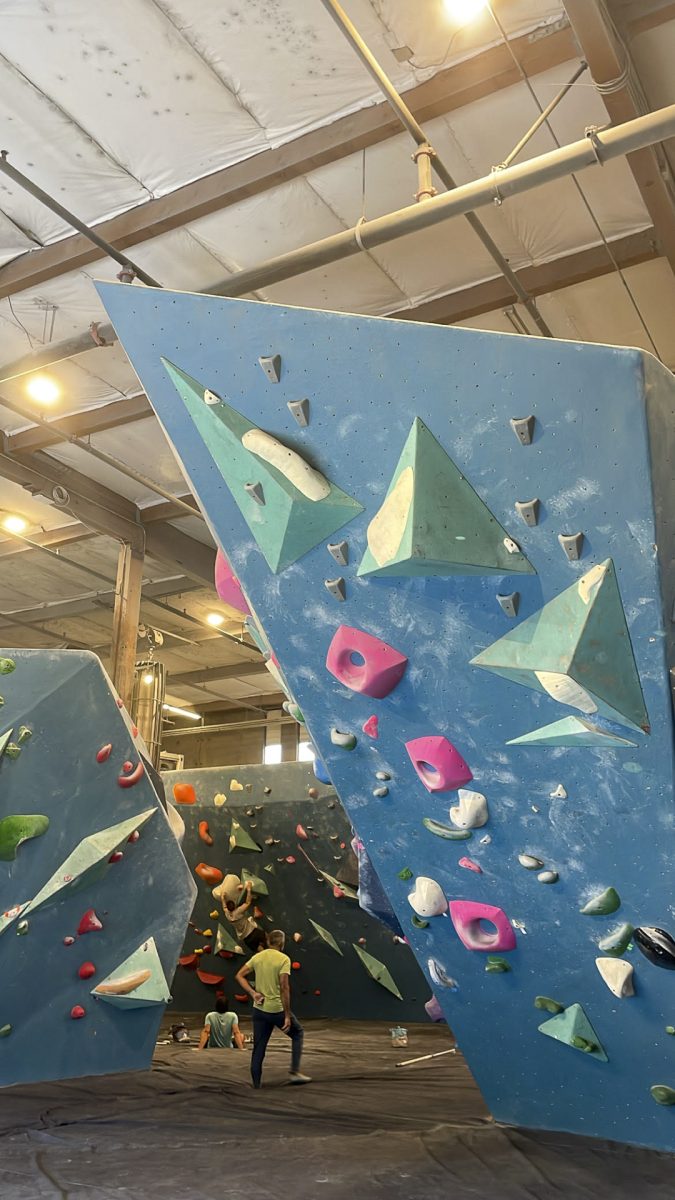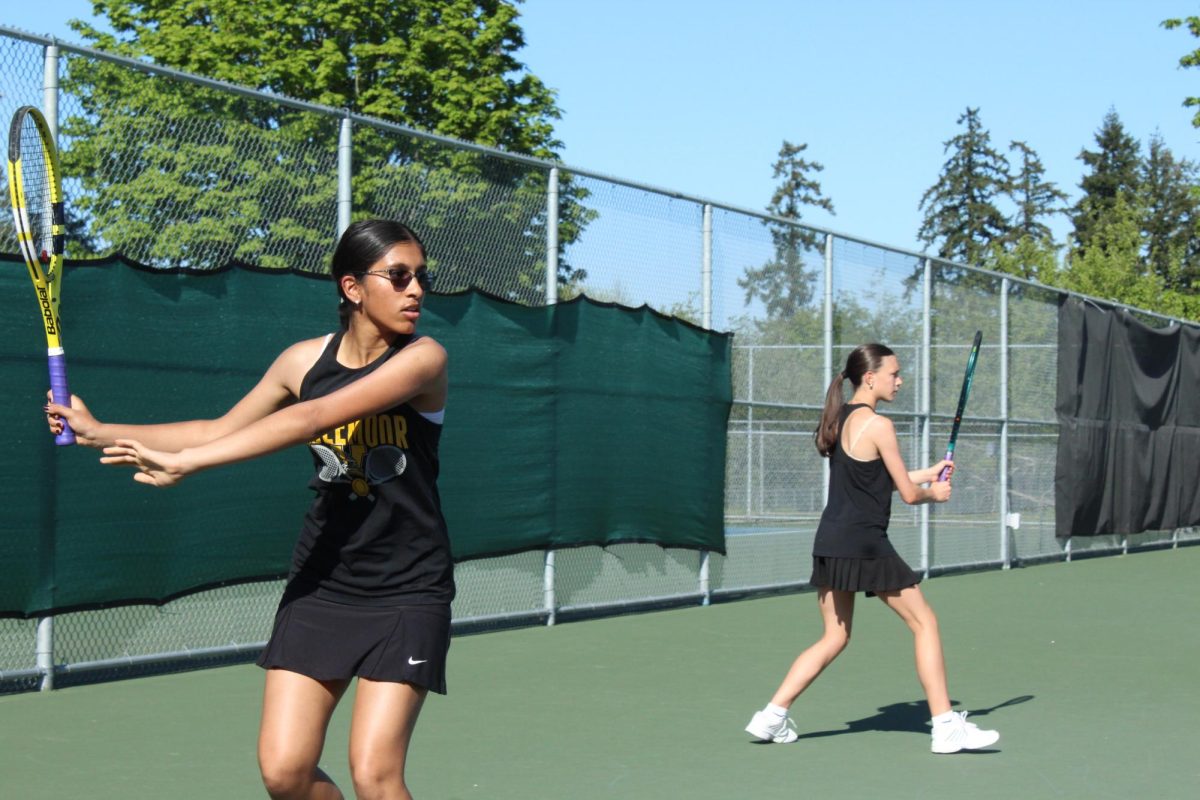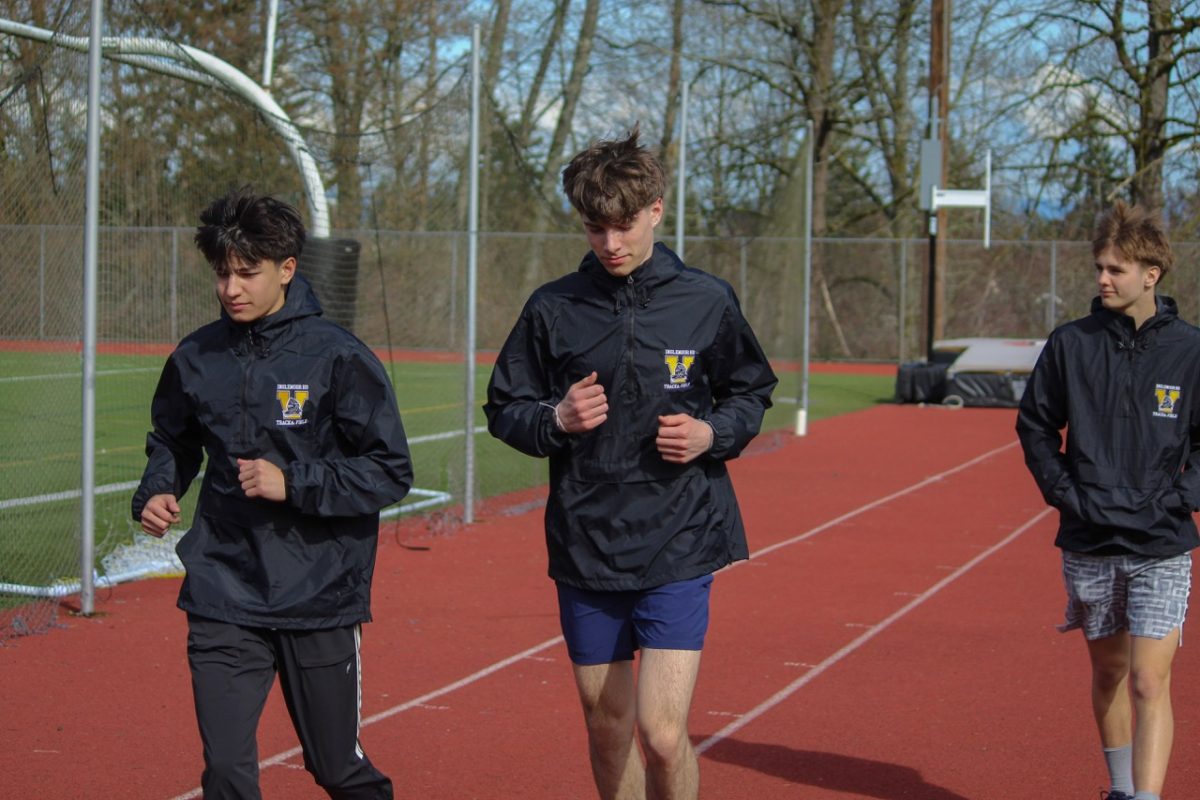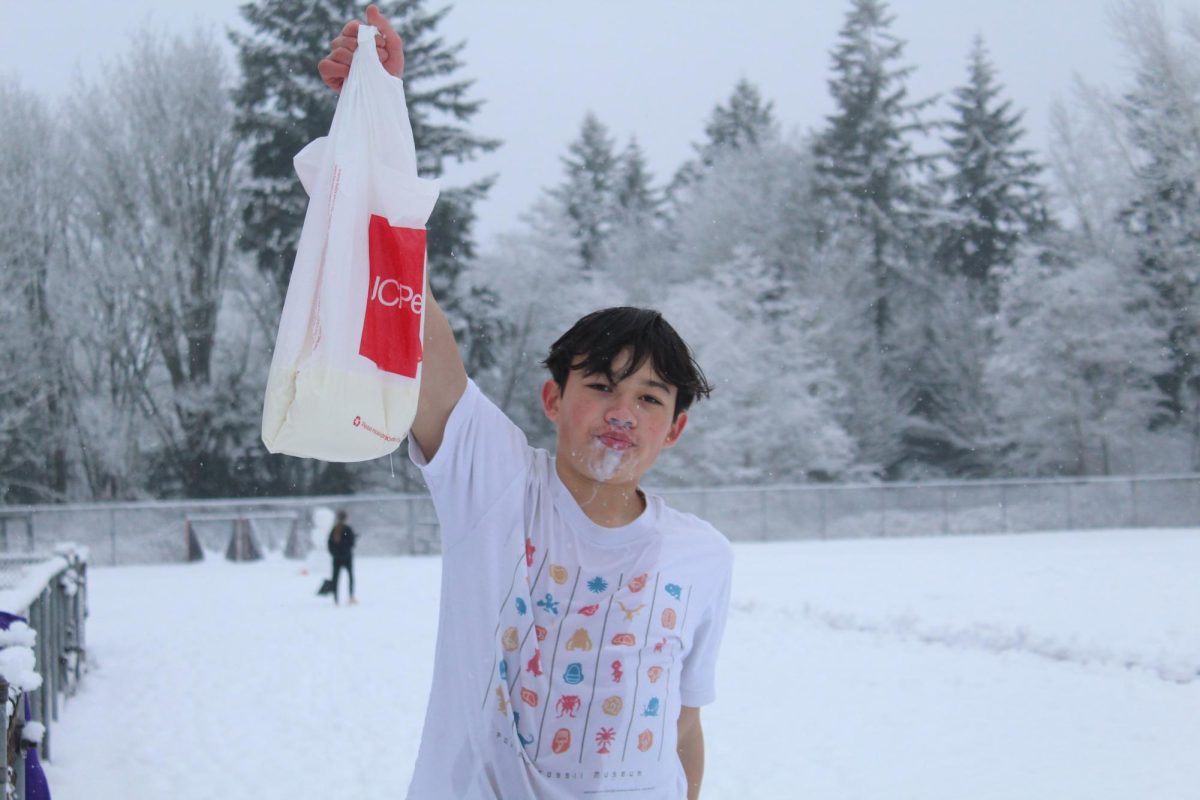Badminton
Sophomore David Zuo (he/him) started playing badminton in his backyard with his older sister when he was eight. Since then, he’s won numerous medals in the sport, but 2023 has been his best year to date. In June, he won first place in both U17 Boys Singles and U17 Boys Doubles at the annual USA Badminton Junior Nationals Championship in Spokane. Boys Singles had 128 competitors and Boys Doubles had 64 pairs.
In badminton, the best of three games wins. The first side to win 21 points wins the set. For the past two years, Zuo and his boys doubles partner Jay Chun rarely failed to qualify for a finals match. However, they’ve always gotten second by losing to the same pair in the third set.
“We’ve always been up there for doubles, but for singles I think I’ve only been top four at most. I’ve never ever been to a finals, so this time was really special, and then I don’t know how I won. I think it was just that I got a really lucky draw.”
Zuo trains seven days a week: two and a half hours on weekdays and up to four hours on weekends. According to Zuo, his dedication and mental preparation are what led him to win.
“There is a lot of pressure because if you make a mistake or if you hit out, it does take a mental toll because the opponent gets a point immediately, unlike some other sports like pickleball where you need to serve to get a point,” Zuo said. “Also there’s a lot of pressure, especially in doubles when you’re serving and your opponent is two feet away from you, ready to smack the bird at your face.”
In July, Zuo represented the U.S. at the Pan American Junior Badminton Championships in Lima, Peru in U17 Boys Doubles. Players are only able to represent the country of their birth and each event has a specific quota for each country — top four for singles, top two for doubles, and top four for mixed doubles. Players need to win at the selection event for Pan American Junior Championships to qualify.
“I only played doubles and then I ended up getting third. We lost to Canada in the semifinals, but then USA ended up winning first place anyway, so it’s okay,” Zuo said.
Zuo’s current goals are to represent the U.S. at the World Junior Championships and win the Pan American Championship in his event.
“I feel honored and really cool — it’s a really cool opportunity. And also, it’s really fun because I get to travel all around the world with my friends and hang out and play the sport that I love,” Zuo said.
Climbing
Junior Morgan Schmitte (she/her) and senior Wesley Dandescu (he/him) are both members of the climbing community.
Indoor climbing consists of three different disciplines: speed, sport climbing and bouldering. Schmitte competes on the Vertical Climbing Team in sport climbing and bouldering. Sport climbing refers to climbing while protected by permanently fixed bolts and anchors drilled into the rock, using a rope and the aid of a belayer. In contrast, bouldering doesn’t require a rope or harness because there’s less elevation. Training around 20 hours every week, Schmitte has competed in nationals in both the US and Canada. Her goal is to make it to worlds this year.
Climbing is rated on a grading system. Bouldering is based on the Vermin scale, which ranges from 0-17, with 17 being the hardest grade. One of Schmitte’s goals is to climb harder grades. Currently, she boulders routes in the V’8 range.
“I like that it’s creative,” Schmitte said. “Every time you climb, you can get on a different route, and it’s always different, or it can be that you’re working on the same thing for a really long time, and then it’s a really great feeling when you accomplish that and finish the route.”
Schmitte’s team consists of about 120 climbers and three coaches. She said that her team is a family, and in general, climbing is one large community. During practice, she does drills on the wall and endurance training.
“So like doing laps on a route, going up and then coming straight down and going up again without resting,” Schmitte said.
Schmitte first started climbing because her mom — who is a climber — got her a membership at the climbing gym for her birthday.
Dandescu started climbing with his dad when he was young. He climbs at Vertical World in Lynnwood and at the public climbing wall in Marymoor Park. He said he prefers to compete with himself by climbing a new grade or improving his endurance.
“I like the individualistic aspects… You can kind of go at it at your own pace and learn how you learn, by yourself,” Dandescu said.
Dandescu said that he’s learned some of his climbing techniques from YouTube, but mostly improved through experience. Dandescu recommends that everyone try climbing.
“Take it slow and just be patient with yourself,” Dandescu said. “You’re not going to be comfortable right away with what you’re doing. And you’re going to be super sore.”
Horseback Riding
Senior Sierra Carlson (she/her) rides Vanilla, her Quarter horse, around a covered arena four days a week. A Quarter horse is an American breed of horse that excels at sprinting short distances. She practices prearranged patterns with her horse to showcase at competitions. Carlson competes in the 4-H category, which is determined by a competitor’s age and experience.
“The entire thing is about demonstrating your ability to work alongside your horse and how smoothly you can look,” Carlson said.
Judges score riders on each obstacle and part of an organized pattern. Dressage is one of the most popular patterns, in which the horse performs a series of practiced movements around obstacles.
Carlson has been riding Vanilla since 2014. She said it’s important for riders to spend time with their horse and control their emotions around them.
“I think he’s an absolute turd, and I love him for it,” Carlson said. “You have to get to know their personality. And they’re not going to if you’re always very emotional around them. They’ll know, and they’ll mess with you because any emotion that you feel, they also know about it. And so if you’re scared around a horse, they know.”
Although Carlson has fallen off Vanilla a lot, she has never had any severe injuries. Her mom restricts her from competing in horse jumping until she turns 18.
“People will break their ribs,” said Carlson. “It’s a dangerous sport, for sure. But it mainly gets dangerous when you add elevation. So when you start jumping in, I’d say it’s probably the most dangerous kind of way to ride horses.”
Another challenge is the price tag. Carlson said competitions, classes and lessons are only a factor of the costs. Some show outfits cost $2,000. And other necessary gear, such as a saddle, satin pad and riding shoes, only decrease the affordability of the sport.
Carlson wears long black leather boots with half chaps for English riding — a form of horseback riding that features a smaller, lighter saddle. For Western-style riding, she wears cowboy boots.
Carlson practices at her family farm in Snohomish. She used to compete on the Snohomish High School team, but she didn’t like the coaches, and it was too far away. Now she travels 15 minutes to a horseback riding show and recently performed at the Evergreen State Fair.
“It’s so important to have a good environment because the sport can be so toxic. I’ve seen a lot of stuff where the horses aren’t treated well. People get too focused on the competition aspect and not on working with a horse,” Carlson said. “It’s intense, but it feels really rewarding.”











